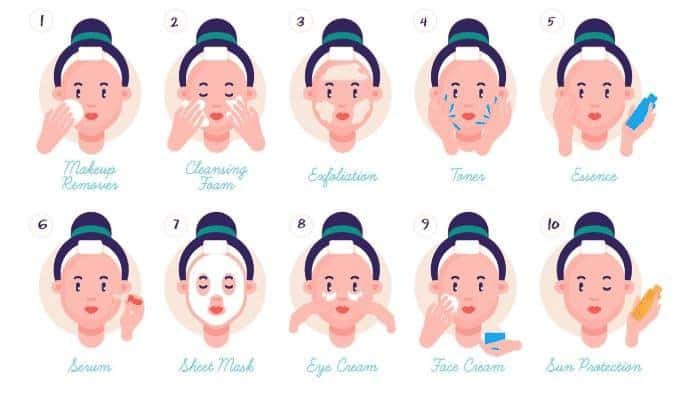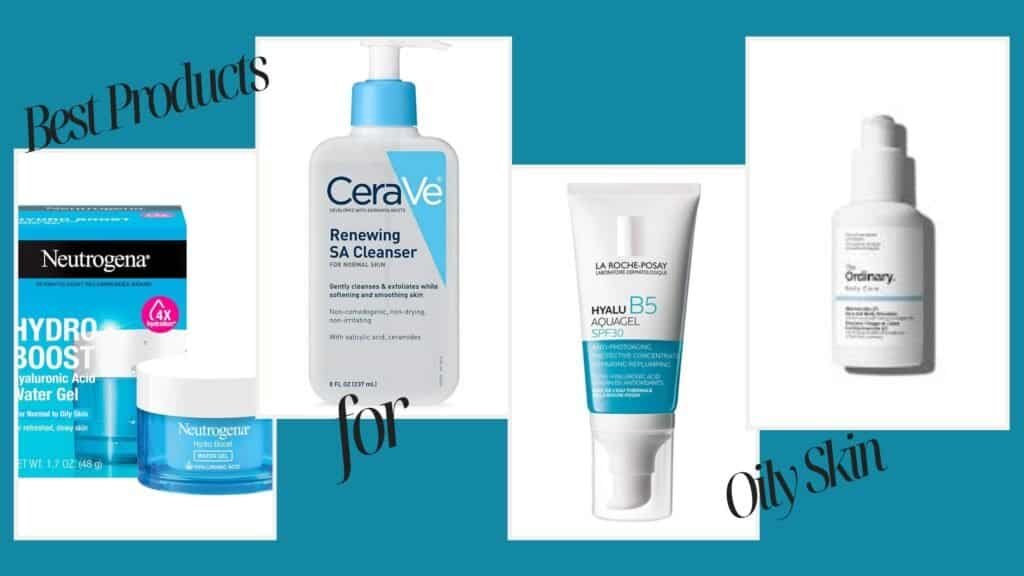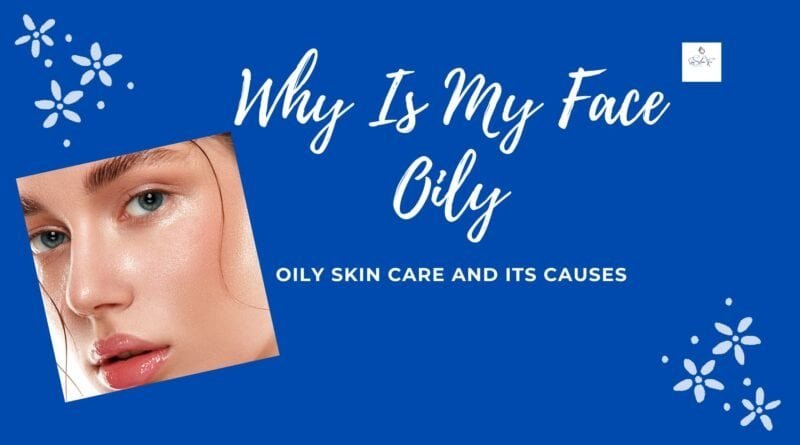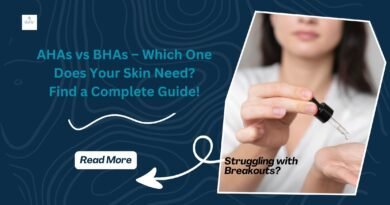Why Is My Face Oily? Oily Skin Causes & Care Guide
Do you ever find yourself asking, “Why is my face so oily?” Or wondering “Why is my skin so oily all of a sudden?” If your face often feels greasy just a few hours after washing it, you’re not alone. Oily skin is a very common skin type, and while it can be frustrating, it’s completely normal and manageable with the right skincare routine.
In this blog post, we’ll explore what causes oily skin, how to know if you have an oily skin type, and the best skincare tips and products to care for it. Whether you’re dealing with a shiny T-zone, greasy face feeling, or frequent breakouts, this guide will help you build a healthy and effective oily skin routine that works.
What Causes Oily Skin?
The main reason your skin feels oily is because of sebum. Sebum is a natural oil made by your skin’s sebaceous glands. It’s there to protect and moisturize your skin, but when too much is produced, it can cause your face to look shiny, feel greasy, and even lead to acne. Because, excess sebum can also clog pores, making your skin prone to blackheads and breakouts.
While sebum is essential, keeping its production balanced is key to healthy skin.
What is the Top causes of oily skin?
Wondering why your skin gets greasy fast? Here are the top causes of oily skin you need to know to take back control:
1. Genetics
If your parents had oily skin, chances are, you do too. Oily skin type often runs in families. Some people naturally have more active oil glands or larger pores. This genetic trait affects how much sebum your skin produces daily. It also influences your skin texture, pore size, and tendency to develop acne. While you can’t change your genes, a consistent skincare routine can help manage the shine and keep your skin clear.
2. Hormones
Hormones, especially androgens, play a major role in oil production. These hormones can increase during puberty, menstruation, pregnancy, or due to some medical conditions. When androgen levels rise, they signal the sebaceous glands to produce more oil. This is why teenagers and women with hormonal imbalances often experience oily skin and breakouts. Managing hormone-triggered oiliness may require both skincare adjustments and, in some cases, medical guidance.
3. Diet and Lifestyle
Foods high in sugar, dairy, or grease may not directly cause oily skin, but they can trigger hormonal changes that increase oil. Stress and lack of sleep also play a part. These lifestyle factors can disrupt your body’s natural balance, leading to inflammation and excess sebum. Spikes in insulin from sugary foods may stimulate androgen activity, worsening oil production. Adopting a balanced diet, managing stress, and getting quality sleep can noticeably improve skin health over time.
4. Weather and Humidity
Hot and humid climates can make your skin produce more oil. You might notice your skin gets extra oily during summer.Heat opens up pores, allowing more sebum to reach the surface and mix with sweat. This can lead to clogged pores, shine, and an increased chance of breakouts if not managed properly.
5. Over-Washing or Skipping Moisturizer
Many people think they should wash their face often or skip moisturizer to reduce oil. But that can backfire. Over-washing strips your skin, causing it to make even more oil to protect itself. Skipping moisturizer can also lead to dehydration, which signals your skin to produce even more oil. The key is balance—gentle cleansing and lightweight hydration help regulate oil without stressing the skin.
How to Know If You Have Oily Skin?
Not sure if your skin is oily? Here are the signs:
- Your skin feels greasy just a few hours after washing.
- You have large, visible pores especially on your forehead, nose, and chin.
- Your makeup melts or slides off during the day.
- You often get blackheads, whiteheads, or acne.
- Your face looks shiny in photos or under light.
If this sounds familiar, you likely have an oily skin type.
Why Is My Skin So Oily All of a Sudden?
Sometimes, your skin might go from normal to oily without warning. Here’s why that might happen:
- Hormonal changes (e.g., periods, pregnancy, birth control, PCOS).
- Switching products that irritate or dry your skin.
- Climate change (moving to a hot or humid place).
- Stress or poor diet.
- Medications (some can boost oil production).
If this happens suddenly and is severe, consider seeing a dermatologist.
Best Oily Skin Routine (Step-by-Step)

Let’s look at the perfect daily oily skin routine that controls oil without drying out your skin. With the right steps, you can keep your skin fresh, balanced, and shine-free all day long.
1. Cleanse Twice Daily
Use a gentle foaming or salicylic acid cleanser in the morning. Salicylic acid helps remove excess oil and unclog pores. At night, try double cleansing as this method ensures your skin is thoroughly clean while maintaining its natural balance.
- Step 1: Oil-based cleanser (to remove makeup/sunscreen).
- Step 2: Gentle foaming cleanser (to clean skin deeply).
Avoid harsh scrubs—they can make things worse Instead, opt for gentle exfoliants that won’t irritate or damage your skin.
2. Moisturize (Yes, Even If You’re Oily!)
People often ask, “Why should I use a moisturizer if my skin is already oily?” The truth is, your skin needs hydration to stay healthy. Without proper moisture, your skin may produce even more oil to compensate for dryness.
Choose a lightweight, oil-free moisturizer with ingredients like:
- Dimethicone (a lightweight silicone that helps smooth and protect your skin’s surface without clogging pores or adding extra shine)
- Glycerin (a powerful humectant that attracts and locks in moisture, keeping your skin hydrated and soft throughout the day)
- Niacinamide (a multi-benefit ingredient that helps regulate oil production, reduces inflammation, and improves overall skin texture and tone)
3. Use Sunscreen Daily
Sunscreen is a must—even for oily skin. Look for lightweight, non-comedogenic formulas that won’t clog your pores or leave a greasy residue. Choosing the right sunscreen helps protect your skin from sun damage without worsening oiliness or shine.
- Gel-based or water-based sunscreens
- Products with low molecular weight alcohols (they absorb fast without shine)
Some top options include:
- La Roche-Posay Anthelios UVmune
- Skin Aqua UV Super Moisture Gel
- Cerave Hydrating Sheer Sunscreen Broad Spectrum SPF 30 for Face & Body
Avoid thick, creamy sunscreens they can make your face oily. Use gel-based or water-based sunscreens that absorb quickly and feel light on the skin.
4. Use Targeted Serums (Optional)
These ingredients help manage oil and acne so, incorporating them into your routine can reduce shine, calm inflammation, and improve overall skin clarity.
- Niacinamide – balances oil and improves skin texture. It also helps minimize pores and reduces redness for a smoother, clearer complexion.
- Sodium Ascorbyl Phosphate – a stable form of vitamin C. It provides antioxidant protection while helping to brighten the skin and reduce acne-causing bacteria.
- EGCG (from green tea) – reduces inflammation and oil. It also protects skin from environmental damage and supports a healthy, balanced complexion.
Use them after cleansing and before moisturizer. This allows the active ingredients to absorb fully and work effectively on your skin.
5. Try Clay Masks (2x a Week)
Clay masks with bentonite or zeolite draw out oil and dirt from your pores. Use them on your T-zone or whole face 1–2 times per week. This also helps makeup go on smoother. Regular use can reduce excess shine and prevent clogged pores, keeping your skin fresh. They provide a deep cleanse without stripping essential moisture, making them perfect for oily skin care.
Best Products for Oily Skin (Dermatologist Recommended)

If you’re building your routine, here are some tried-and-true options:
| Step | Product Type | Recommended Ingredients |
| Cleanser | Salicylic Acid | CeraVe Renewing SA Cleanser |
| Moisturizer | Lightweight Gel | Neutrogena Hydro Boost, Vanicream Gel |
| Sunscreen | Gel-based SPF | La Roche-Posay, Skin Aqua UV Gel |
| Treatment Serum | Niacinamide/Vit C | The Ordinary Niacinamide, Klairs SAP |
| Clay Mask | Bentonite Clay | Aztec Secret Indian Healing Clay |
Myths About Oily Skin You Should Stop Believing
There’s a lot of misinformation out there. Let’s bust a few myths and get to the real facts your skin needs.
Myth 1: You Should Wash Your Face Often
Washing more than twice a day dries out your skin and increases oil production. This triggers your sebaceous glands to produce even more oil. Stick to cleansing once in the morning and once before bed for balance.
Myth 2: Oily Skin Doesn’t Need Moisturizer
Even oily skin needs hydration. A good moisturizer prevents water loss. Skipping moisturizer can actually lead to increased oiliness. Look for lightweight, non-comedogenic formulas that won’t clog pores.
Myth 3: You Can Cure Oily Skin
Oily skin is a skin type, not a condition. You can manage it, but not eliminate it entirely. It’s influenced by genetics, hormones, and environment. Consistent care and the right products can keep shine under control.
Mental Health and Oily Skin: Embrace Your Glow
Social media often shows filtered, matte, and airbrushed skin. But shiny skin is normal, and oil is not the enemy. Oily skin can even help delay wrinkles and give you a natural glow. Embracing your natural skin texture is part of healthy skincare.
Focus on balance, not perfection—your skin doesn’t need to look flawless to be healthy.
So the next time you ask “Why is my skin so oily?”, remember it’s just doing its job. The goal is not to remove oil completely, but to balance it so your skin feels comfortable and healthy.
Key Take Away:
If you’ve been struggling with greasy face problems, melting makeup, or frequent breakouts, know that you’re not alone. Oily skin is totally normal, and with a smart routine, it can actually be a great asset.
Let’s recap your ideal oily skin routine:
- Gentle, twice-a-day cleansing
- Lightweight, non-greasy moisturizers
- Sunscreens that don’t add shine
- Helpful ingredients like niacinamide and vitamin C
- Oil-absorbing clay masks for extra care
Whether you’re wondering why your face is oily, how to manage oily skin, or what products to use, this guide has everything you need to build a confident, clean, and oil-balanced skincare journey.



